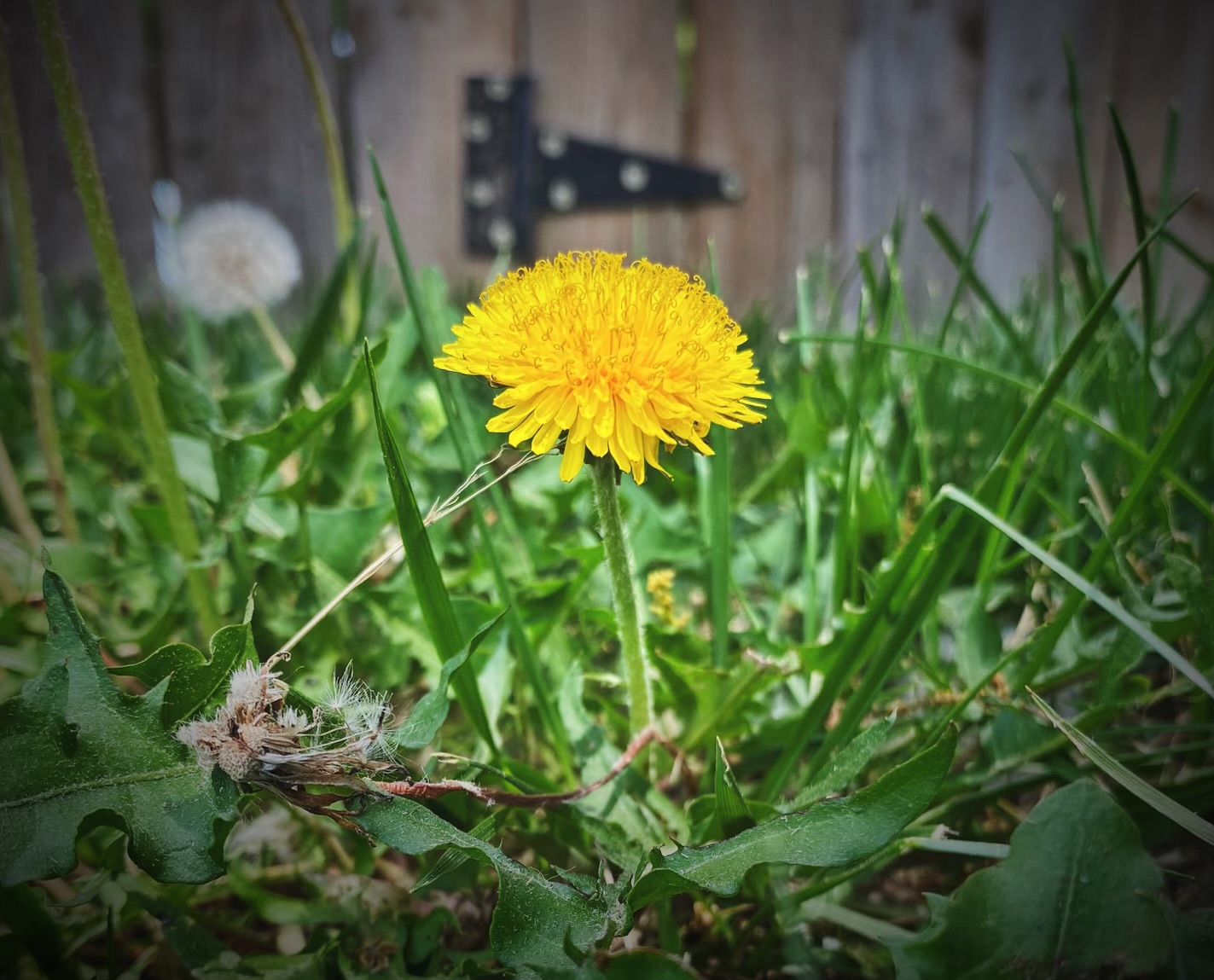By Mike Templeton
An essential feature of any culture is food, and this is why a regular focus of the Urban Appalachian Community Coalition blog is Appalachian foodways. Our foodways and traditions are at the heart of what we are, and many of these culinary traditions came with Appalachian migrants as they came to urban areas like Cincinnati. In taking stock of Appalachian foodways, we can also find ways to preserve, and possibly renew, some old practices like food foraging.
Our first blog post on Appalachian foodways traditions of food foraging was about wild mushrooms. With summer nearly upon us, it seems like a good time to return to this with foraging for dandelions. Among the many wild plants foraged for food and medicine that have been, and remain, integral to Appalachian foodways, the common dandelion may be one of the most versatile and abundant. Dandelion flowers, greens, and roots can all be used in one way or another in Appalachian foodways.
Many people now regard dandelions as weeds, something to be removed from their perfect yards. But the dandelion has always been a staple of Appalachian foodways as wells as a crucial element in the herbal medicine cabinet of Appalachian folk life. Mountain people have always looked to the natural world as a source of food and medicine. The first people to settle the Appalachian region learned from indigenous peoples how to use the hundreds of edible and medicinal plants in the region, and along with farming, foraged food came to be a staple of the Appalachian diet. Dandelions are a seasonal favorite and occupy a central place among foraged foods.
Many may be surprised to learn that the common dandelion is not native to North America. It came with European settlers who were already using it for food and medicine. It is not considered an invasive species, although lawn fanatics may disagree. Dandelions are so valued as food that they have been hybridized in France to produce a larger flower. Appalachian food foragers remain content with what is found in meadows and yards. While food foraging generally requires advanced knowledge of plants since mistakes in this field can be deadly, the simple dandelion offers an ideal beginning for anyone who has taken an interest in foraging their own wild food.
All parts of the dandelion are edible, and each is used for specific purposes. The flowers are used to make wine or added to vinegar. The leaves can be eaten raw when young or steamed as they mature. And dandelion roots can be dried and used as a replacement for coffee. Dandelions are rich in vitamin A, vitamin C, vitamin D and vitamin B complex, plus zinc, iron, and potassium. Beyond the nutritional value, dandelions have been used medicinally as a tonic to aid digestion, a diuretic, and an anti-inflammatory.
Traditionally dandelions are foraged mostly in spring when the leaves are most tender, but in greater Cincinnati dandelions grow from spring straight through fall. We have no shortage of dandelions in our area, which is why foraging dandelions remained a part of life as migrants made the transition to urban Appalachians. Before you forage dandelions, you obviously need to take dandelions from places where foraging is permitted. Your neighbor’s lawn may well be bursting with blooms, but you might need to ask permission before you forage. It is also extremely important to make sure the dandelions you forage have not been sprayed with lawn treatment chemicals. These are extremely toxic.
Spring is the best time to forage dandelion greens when they are not quite so bitter. But dandelions grow all summer around greater Cincinnati, and you can cut the bitterness of dandelion greens by cooking them with some garlic, olive oil, and salt and pepper. Fall is the ideal time to harvest the dandelion root since the plant begins to focus energy on the roots to prepare for winter. If you harvest dandelion root, it needs to be dried and ground to make something similar to decaffeinated coffee. You can pick the petals from the blossoms to make dandelion honey butter. Recipes for dandelion blossoms are at the link below. Another classic use for dandelion blossoms is dandelion wine. This requires some commitment, but a link with a recipe for dandelion wine is also below.
For Appalachian people in the mountains, food foraging offered not only some variety in the diet, but it also offered yet another source of sustenance in times and places where hunger was never a distant prospect. There was no wasting of foods, and food sources growing in abundance in the surrounding hills and fields were not to be wasted either. For us urban Appalachians, the common dandelion offers an easy way to begin food foraging. It is easy to identify. and it grows all over Appalachia and greater Cincinnati. In exploring dandelions as a feature of Appalachian foodways, the Urban Appalachian Community Coalition invites you to begin to see the common dandelion as something far more than a weed. Let your dandelions grow; you can feed the pollinators and yourself.
Grow Appalachia, with Berea College, offers more tips on food foraging. You can follow at this link: https://growappalachia.berea.edu/2016/05/31/wild-and-edible/.
Dandelion flower recipeshttps://roundthebendfarm.org/2020/07/14/three-ways-to-eat-dandelions/,
To make dandelion wine: https://www.appalachianhistory.net/2018/04/pleasant-drink-of-medicinal-value.html.
Mike Templeton is a writer, independent scholar, barista, cook, guitar player, and accidental jack-of-all-trades. He is the author of the forthcoming The Chief of Birds: A Memoir. Available later this year from Erratum Press, and Impossible to Believe, forthcoming from Iskra Books. Check out his profile in UACC’s new Cultural Directory. He lives in downtown Cincinnati with his wife who is a talented photographer. They spend their free time walking around the city snapping photos. She looks up at that the grandeur of the city, while Mike always seems to be staring at the ground.

